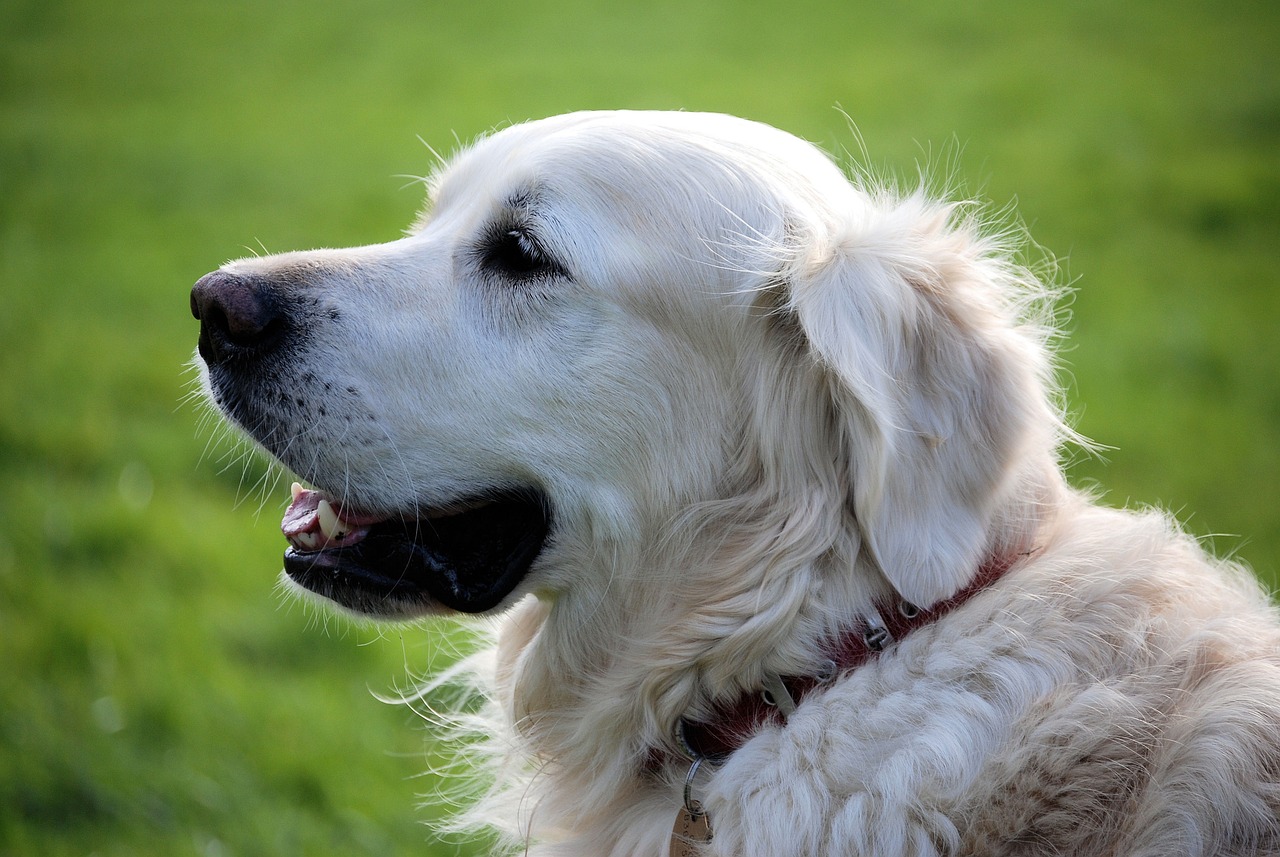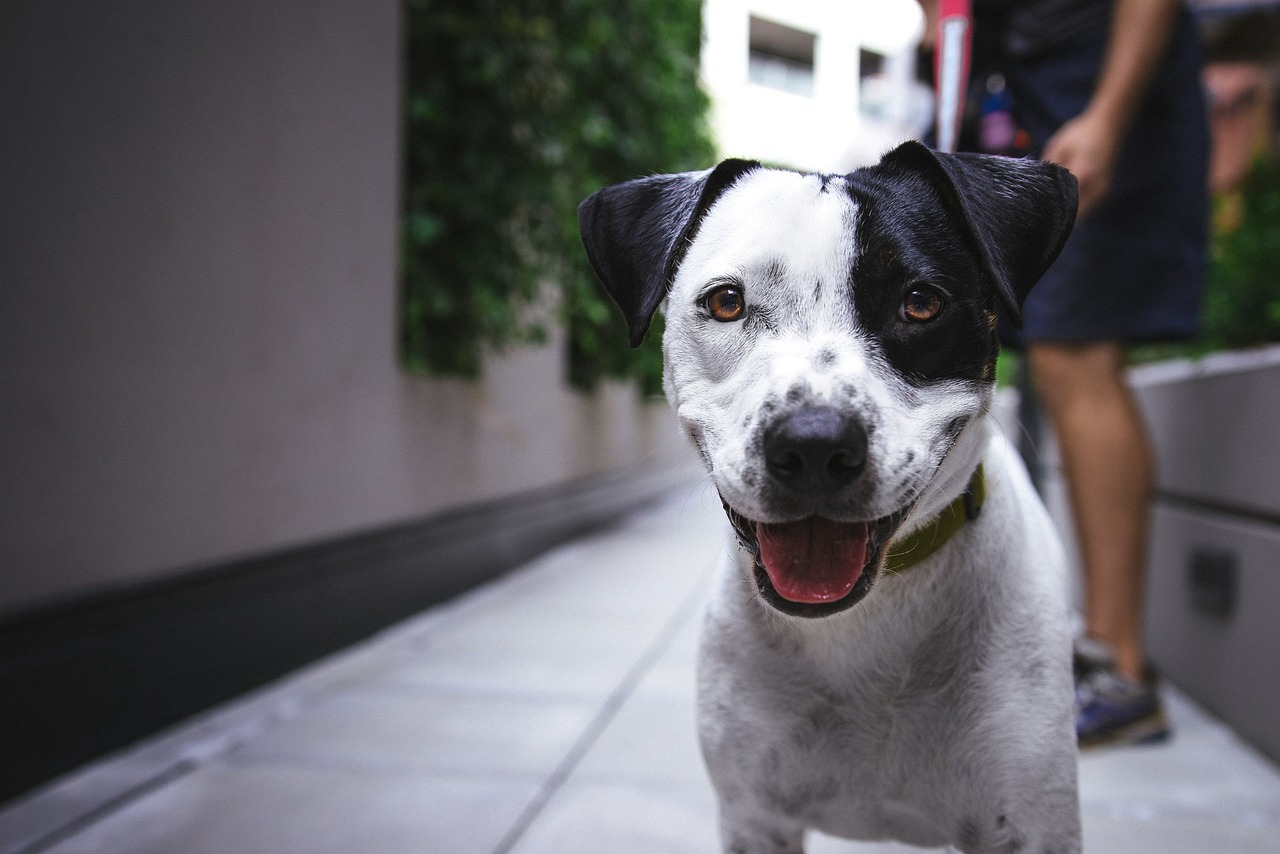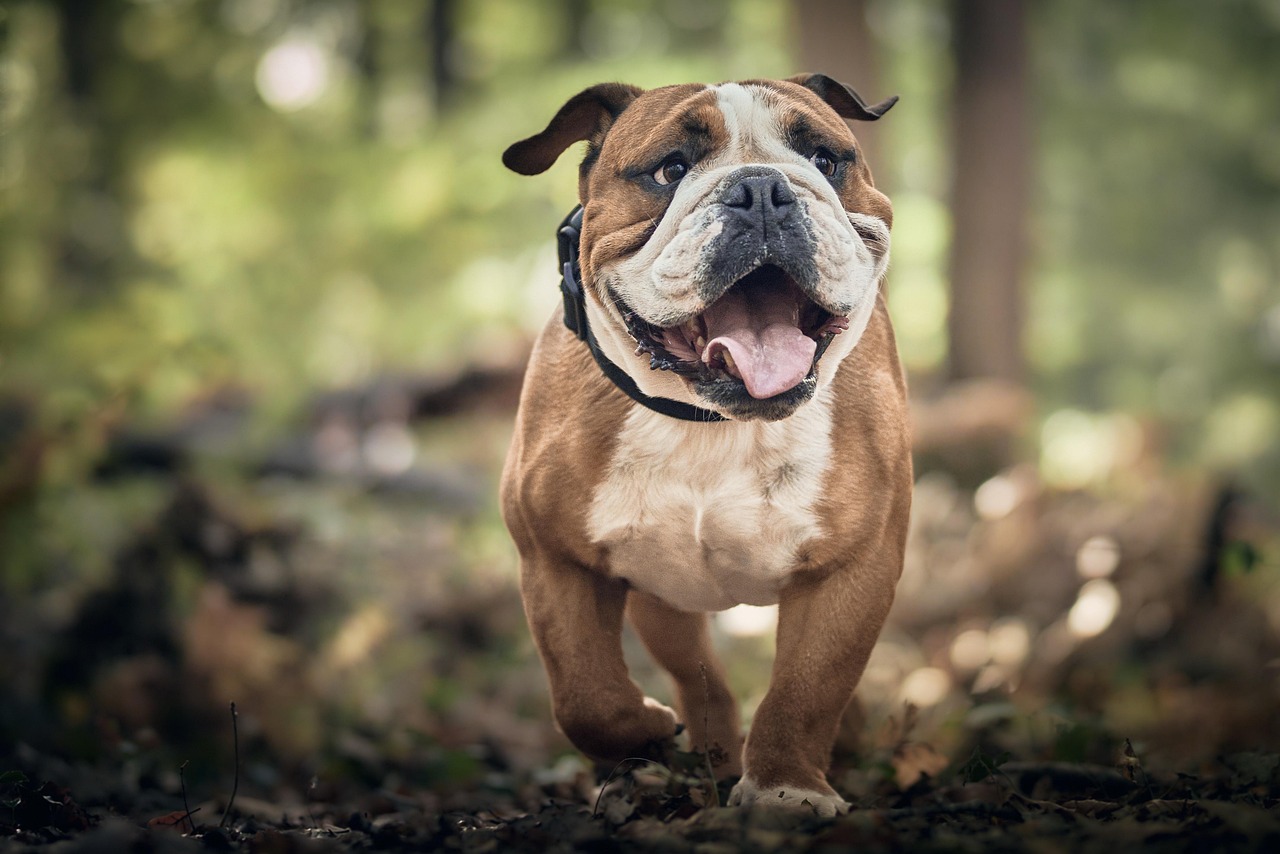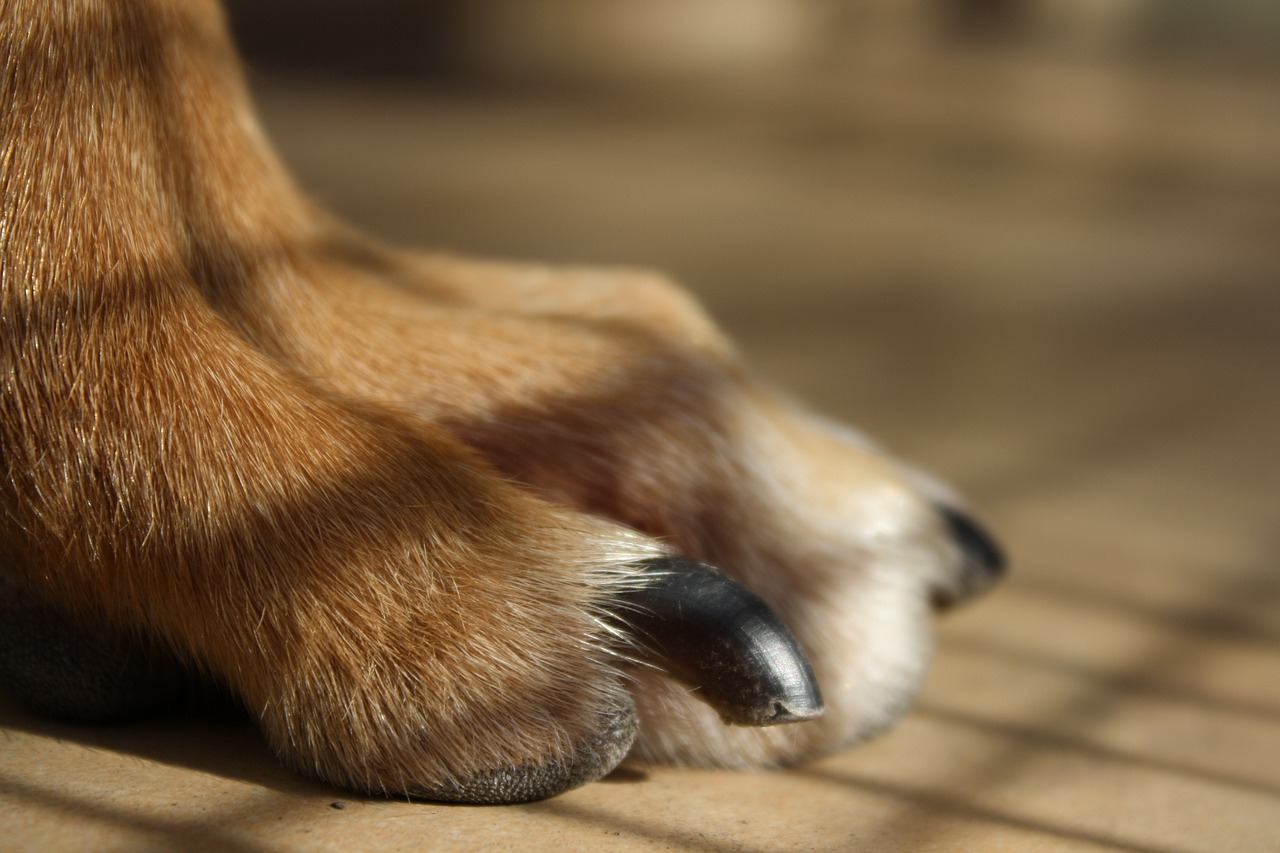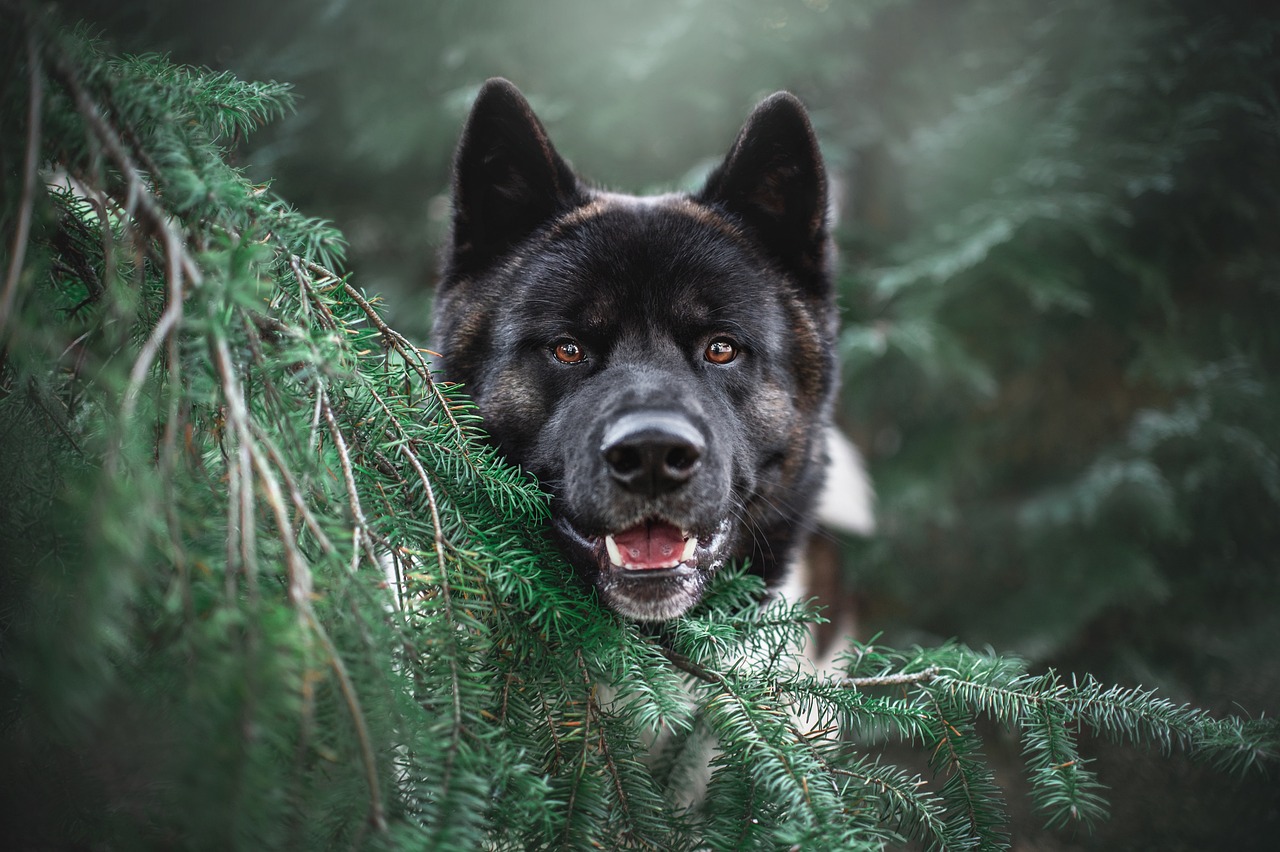This article provides a comprehensive guide on how to identify and treat bee stings on your dog’s paw, ensuring their comfort and safety during recovery.
Understanding Bee Stings in Dogs
Bee stings can cause significant pain and discomfort in dogs. It is crucial to recognize the symptoms and understand how a bee sting affects your pet. Familiarizing yourself with the anatomy of a bee sting can help you respond effectively in an emergency.
Identifying Symptoms of a Bee Sting
Dogs exhibit various symptoms when stung by a bee. Being aware of these signs can help you determine the severity of the situation.
- Common Symptoms to Watch For: Look for signs such as swelling, redness, and limping. These symptoms can indicate a bee sting and should prompt immediate attention.
- Behavioral Changes After a Sting: Your dog may show signs of distress, such as whining or excessive licking. These behaviors can signal pain and discomfort from the sting.
- When to Seek Veterinary Help: If your dog has difficulty breathing or shows severe swelling, seek veterinary assistance immediately, as these could indicate an allergic reaction.
Immediate First Aid for Bee Stings
Taking quick action can alleviate your dog’s pain. Here are some first aid steps you can take right away:
- Removing the Stinger Safely: If the stinger is still embedded in your dog’s paw, carefully remove it to prevent further irritation.
- Using a Credit Card Technique: A credit card can be used to scrape the stinger out gently, avoiding squeezing the venom sac.
- Cleaning the Affected Area: After removing the stinger, clean the area with mild soap and water to prevent infection.
Home Remedies for Pain Relief
Several home remedies can help soothe the pain and inflammation caused by a bee sting:
- Cold Compress Application: Applying a cold compress can reduce swelling and numb the pain. Ensure the compress is wrapped in a cloth.
- Natural Anti-Inflammatory Options: Consider using natural remedies like honey or aloe vera, which can provide soothing properties.
Preventing Future Bee Stings
Taking preventive measures can help avoid bee stings in the future:
- Training Your Dog to Avoid Bees: Training can help your dog learn to avoid areas where bees are likely to swarm.
- Creating a Safe Outdoor Environment: Landscaping your yard and avoiding flowering plants can minimize bee presence.
Conclusion: Ensuring Your Dog’s Comfort
By understanding how to treat bee stings and taking preventive measures, you can ensure your dog remains comfortable and safe during outdoor adventures.

Understanding Bee Stings in Dogs
Bee stings can be a distressing experience for dogs, leading to pain and discomfort. It is essential for pet owners to recognize the symptoms of a bee sting and understand the anatomy of a bee sting to respond effectively and ensure their dog’s well-being.
The Anatomy of a Bee Sting
A bee sting consists of a venom sac, barbed stinger, and a delivery system that injects venom into the skin. When a bee stings, the stinger can become lodged in the skin, continuing to release venom. This can lead to increased pain and swelling. Understanding this process is crucial for effective treatment.
Identifying Symptoms of a Bee Sting
Dogs exhibit various symptoms when stung by a bee. Recognizing these signs can help you determine the severity of the situation and the necessary steps to take:
- Swelling: Look for localized swelling around the sting site, often seen on the paws or face.
- Redness: The skin may appear red and inflamed due to the body’s reaction to the venom.
- Limping: If the sting is on a paw, your dog may favor that limb and show signs of discomfort while walking.
Behavioral Changes After a Sting
Your dog may exhibit signs of distress, such as whining, excessive licking, or restlessness. These behaviors can indicate pain and discomfort resulting from the sting. It’s important to monitor your dog’s behavior closely after a suspected sting.
When to Seek Veterinary Help
If your dog experiences difficulty breathing, severe swelling, or shows signs of an allergic reaction, it is critical to seek veterinary assistance immediately. These symptoms can indicate a serious condition that requires prompt medical attention.
Conclusion
Being aware of the signs and symptoms of bee stings in dogs can help you respond quickly and effectively. By understanding the anatomy of a bee sting and recognizing the symptoms, you can ensure your dog receives the appropriate care and comfort during recovery.

Identifying Symptoms of a Bee Sting
When your dog gets stung by a bee, it can be a distressing experience for both the pet and the owner. Recognizing the symptoms of a bee sting is crucial for prompt treatment and alleviating your dog’s discomfort. Here are some common signs to look for:
- Swelling: One of the most noticeable symptoms is swelling around the sting site, which may appear red and inflamed.
- Redness: The area may become red and warm to the touch, indicating irritation and inflammation.
- Paw Licking: If your dog is frequently licking their paw, it may be a sign that they are feeling pain or discomfort from the sting.
- Whining or Whimpering: Vocalizations like whining can indicate that your dog is in pain. Pay attention to any unusual sounds they make.
- Limping: If your dog is favoring one paw or limping, it could be due to pain from the sting.
- Excessive Scratching: Dogs may scratch at the affected area in an attempt to relieve discomfort, which can lead to further irritation.
Behavioral Changes After a Sting
In addition to physical symptoms, you may notice changes in your dog’s behavior. They may become more withdrawn, anxious, or irritable. Understanding these behavioral cues can help you assess the severity of the situation.
When to Seek Veterinary Help
If your dog exhibits severe symptoms such as difficulty breathing, excessive swelling, or signs of an allergic reaction, it is essential to seek veterinary assistance immediately. These symptoms can indicate a serious condition that requires prompt medical intervention.
By being aware of these symptoms, you can take the necessary steps to ensure your dog’s well-being after a bee sting. Prompt recognition and action can significantly improve their comfort and recovery.
Common Symptoms to Watch For
When your dog experiences a bee sting, it’s essential to be observant and recognize the signs that may indicate discomfort or pain. Here are some key symptoms to monitor:
- Swelling: Look for localized swelling around the area of the sting, which can be a clear indication that your dog has been stung. This swelling may appear within minutes and can vary in size.
- Redness: The affected area may also appear red and inflamed. This redness is a response to the venom and can be accompanied by heat in the area.
- Limping: If your dog is limping or favoring one paw, it could be a sign that the sting is causing pain. Pay attention to how your dog walks and whether they hesitate to put weight on the affected paw.
- Excessive Licking: Dogs often instinctively lick the area where they feel pain. If you notice your dog licking their paw excessively, it may be a response to the discomfort from the sting.
- Whining or Whimpering: Vocalizations such as whining or whimpering can indicate that your dog is in distress. This behavior should be taken seriously, as it often correlates with pain.
- Behavioral Changes: Watch for any sudden changes in your dog’s behavior, such as increased agitation, restlessness, or a desire to hide. These changes can signal that your dog is experiencing discomfort.
Recognizing these symptoms early can help you take appropriate action. If you observe any of these signs, especially if they worsen or if your dog exhibits signs of an allergic reaction, such as difficulty breathing or severe swelling, it’s crucial to seek veterinary assistance immediately.
Behavioral Changes After a Sting
When your beloved dog experiences a bee sting, it can be distressing for both you and your furry friend. One of the first indications that something is wrong may be changes in your dog’s behavior. You might notice your dog whining or excessively licking the affected area, which are common responses to pain and discomfort. These behaviors are not just simple reactions; they can be significant signals that your dog is experiencing considerable distress.
In addition to whining and licking, other signs can manifest, such as increased restlessness or attempts to hide. Your dog may also become more clingy, seeking comfort from you. This change in demeanor can be an indication that your dog is trying to cope with the pain caused by the sting. Observe if your pet is favoring the affected paw or exhibiting signs of agitation, such as barking or pacing.
Physical symptoms often accompany these behavioral changes. Look for swelling or redness around the sting site, as these can further confirm that your dog has been stung. If the swelling is significant or if your dog appears to be in severe pain, it is crucial to seek veterinary assistance as soon as possible. In some cases, dogs may have allergic reactions that require immediate medical attention.
Understanding your dog’s behavior after a bee sting is essential for providing the appropriate care. By recognizing these signs and responding promptly, you can help alleviate your dog’s discomfort and ensure a swift recovery. Remember, your dog’s well-being is paramount, and taking quick action can make all the difference.
When to Seek Veterinary Help
As a responsible pet owner, it’s crucial to be vigilant about your dog’s health, especially when it comes to potential allergic reactions. If you notice that your dog is experiencing difficulty breathing, it is essential to act swiftly. This symptom can be indicative of a serious allergic reaction known as anaphylaxis, which can escalate rapidly and become life-threatening. Additionally, if you observe severe swelling in any part of your dog’s body, particularly around the face, throat, or paws, it is imperative to seek veterinary assistance immediately.
Allergic reactions can manifest in various ways, and recognizing the signs early can be the difference between a minor issue and a critical emergency. Other symptoms to watch for include:
- Excessive drooling
- Vomiting or diarrhea
- Hives or rash
- Rapid heart rate
If you notice any combination of these symptoms, do not hesitate to contact your veterinarian or an emergency animal clinic. Time is of the essence in these situations, and prompt medical intervention can significantly improve your dog’s chances of recovery.
In addition to physical symptoms, pay attention to your dog’s behavior. If your pet seems unusually anxious, restless, or is hiding, these could be signs of distress related to an allergic reaction. Remember, it is always better to err on the side of caution. If you are ever in doubt, consulting with a veterinary professional can provide peace of mind and ensure your dog’s safety.
In conclusion, being aware of the signs of an allergic reaction and knowing when to seek veterinary help is essential for your dog’s well-being. By staying informed and vigilant, you can help ensure that your furry friend remains healthy and happy.
Immediate First Aid for Bee Stings
When your dog gets stung by a bee, it can be a distressing experience for both you and your furry friend. Quick action is essential to alleviate your dog’s pain and discomfort. Here are some important first aid steps you can take right away:
- Stay Calm: Your dog can sense your anxiety, so it’s important to remain calm to help soothe them.
- Assess the Situation: Check your dog for signs of a bee sting, such as swelling or redness around the paw.
- Remove the Stinger: If you see a stinger embedded in the skin, it’s crucial to remove it promptly. You can use a credit card to gently scrape it out, avoiding squeezing the venom sac.
- Clean the Area: After the stinger is removed, clean the affected area with mild soap and water to prevent infection.
- Apply a Cold Compress: Use a cold compress wrapped in a cloth to reduce swelling and numb the pain. Apply it for 10-15 minutes.
- Monitor for Allergic Reactions: Keep an eye on your dog for any signs of severe reactions, such as difficulty breathing or excessive swelling.
- Consult a Veterinarian: If symptoms worsen or your dog shows signs of distress, contact your veterinarian for further assistance.
By taking these immediate first aid steps, you can help alleviate your dog’s pain and ensure their comfort after a bee sting. Always remember that while home care is important, professional veterinary advice is invaluable in case of severe reactions.
Conclusion: Knowing how to respond quickly to a bee sting can make a significant difference in your dog’s recovery. Always be prepared and keep your veterinarian’s contact information handy for emergencies.
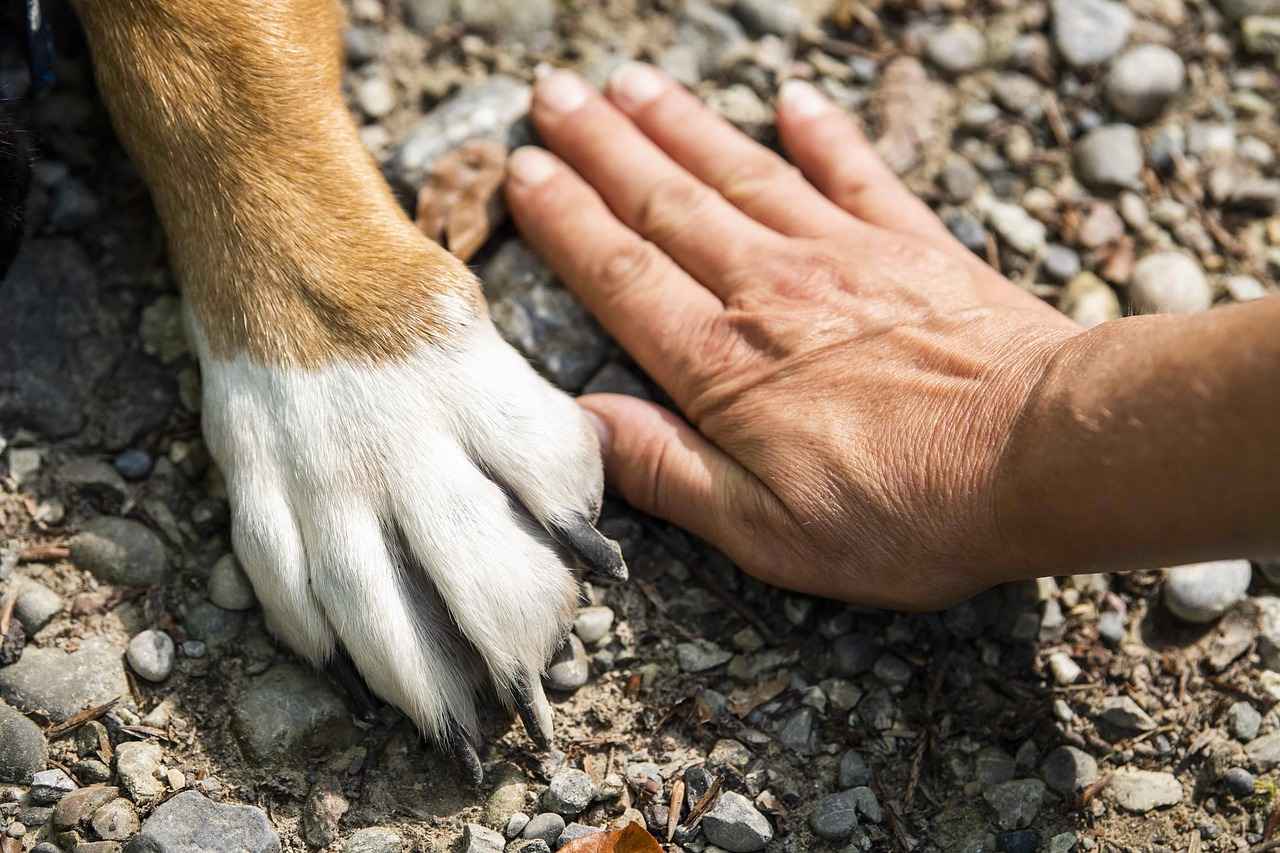
Removing the Stinger Safely
If your dog has been stung by a bee and the stinger is still embedded in their paw, it is essential to act quickly and carefully. Leaving the stinger in can lead to increased irritation and pain, potentially worsening your dog’s discomfort. Here’s a detailed guide on how to safely remove the stinger from your dog’s paw.
- Gather Your Supplies: Before you start, make sure you have a pair of tweezers or a credit card, antiseptic wipes, and a cold pack ready. These tools will help you perform the removal safely and effectively.
- Stay Calm: Your dog may be in pain and could react unpredictably. Speak softly to reassure them and ensure they are calm before you begin the removal process.
- Remove the Stinger: Using tweezers, gently grasp the stinger as close to the skin as possible. Pull it out in a straight motion without twisting to avoid breaking it. If you prefer a less invasive method, you can use the credit card technique. Hold the card at a slight angle and scrape it against the skin to dislodge the stinger.
After the stinger is removed, it is crucial to clean the affected area. Use antiseptic wipes or mild soap and water to gently cleanse the paw. This step helps to prevent infection and reduces the risk of further irritation.
Once cleaned, you can apply a cold pack wrapped in a cloth to the area for about 10-15 minutes. This will help soothe the pain and reduce swelling. Monitor your dog closely for any signs of an allergic reaction, such as difficulty breathing or excessive swelling, and seek veterinary assistance if necessary.
By following these steps, you can help alleviate your dog’s discomfort and promote a speedy recovery from a bee sting.
Using a Credit Card Technique
When your dog suffers a bee sting, it’s essential to act swiftly and carefully. One effective method for removing the stinger is the credit card technique. This approach minimizes the risk of squeezing the venom sac, which can lead to more venom being released into your dog’s system.
To perform this technique, follow these steps:
- Stay Calm: Your dog may be in pain and anxious. Ensure you approach them gently to avoid further distress.
- Gather Your Supplies: You will need a credit card or a similar stiff plastic card. Having a pair of tweezers on hand can be useful if the stinger is stubbornly lodged.
- Position the Card: Hold the card at a slight angle against your dog’s skin, just above the stinger.
- Scrape Gently: Apply firm pressure and scrape the card towards the stinger. This motion should dislodge the stinger without squeezing the venom sac.
- Check for Residue: After the stinger is removed, inspect the area for any remaining fragments.
It’s crucial to avoid using your fingers or tweezers directly on the stinger, as this can inadvertently compress the venom sac. If you do not feel comfortable performing this technique, or if your dog shows signs of an allergic reaction, such as difficulty breathing or severe swelling, seek veterinary assistance immediately.
In addition to the credit card method, remember to clean the affected area afterward with mild soap and water. This step is vital to prevent infection and promote healing.
By utilizing the credit card technique effectively, you can help alleviate your dog’s discomfort and ensure a smoother recovery from a bee sting.
Cleaning the Affected Area
Once you have successfully removed the stinger from your dog’s paw, it is essential to clean the affected area properly. This step is crucial in preventing infection and promoting healing. Here’s how to do it:
- Gather Your Supplies: You will need mild soap, lukewarm water, and a clean cloth or gauze. Avoid using harsh chemicals or alcohol, as these can irritate the skin further.
- Prepare the Cleaning Solution: Mix a small amount of mild soap with lukewarm water in a bowl. Ensure the soap is well-diluted to avoid any additional irritation to your dog’s skin.
- Gently Clean the Area: Using a clean cloth or gauze, dip it into the soapy water and gently wipe the area around the sting. Be careful not to scrub too hard, as this can cause more pain and discomfort.
- Rinse Thoroughly: After cleaning, rinse the area with plain lukewarm water to remove any soap residue. This step is important to prevent further irritation.
- Dry the Area: Pat the area dry with a soft towel. Avoid rubbing, as this can aggravate the sting site.
Cleaning the sting site not only helps to soothe the discomfort but also minimizes the risk of infection. If you notice any signs of infection, such as increased redness, swelling, or discharge, it is advisable to consult your veterinarian for further evaluation.
Taking these steps will ensure your dog remains comfortable and aids in their recovery process. Remember, your dog’s well-being is a priority, and prompt attention to a bee sting can make all the difference.
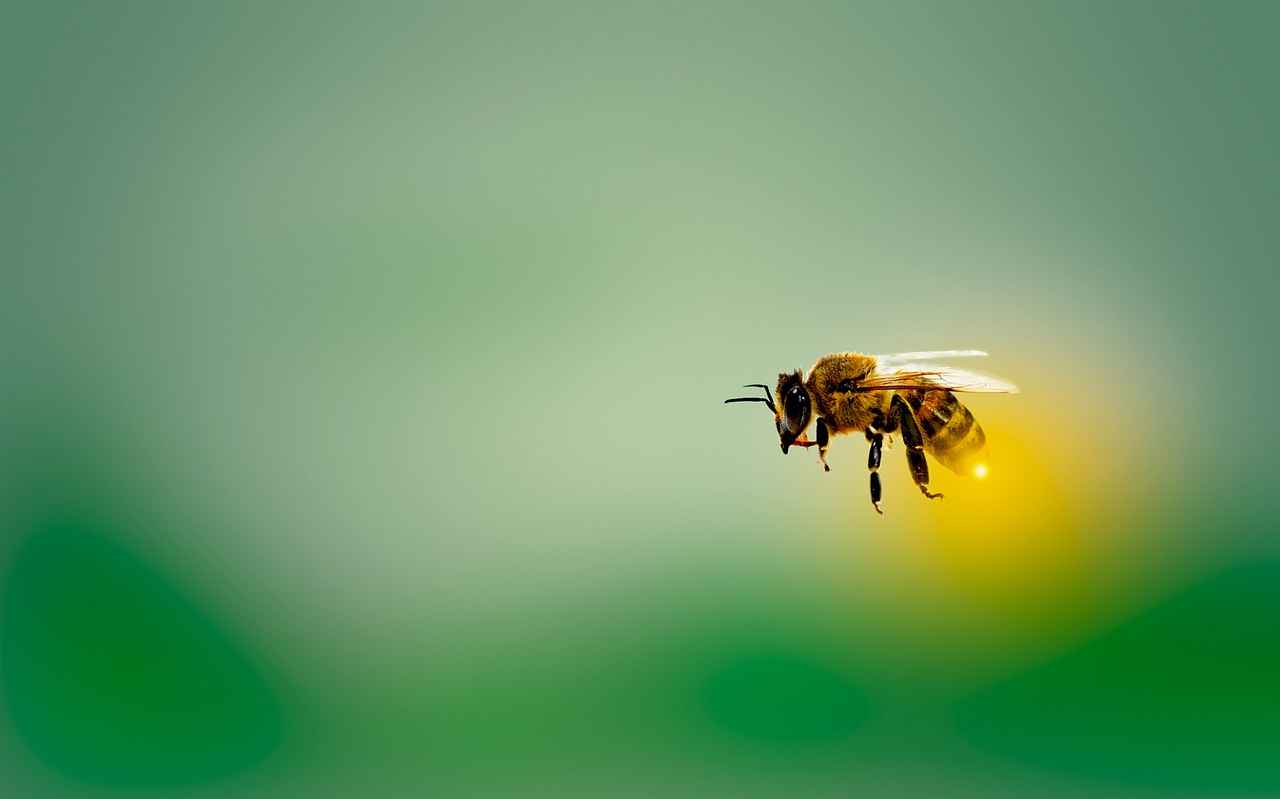
Home Remedies for Pain Relief
When your dog suffers from a bee sting, it can be distressing for both you and your furry friend. Thankfully, there are several home remedies that can help soothe the pain and inflammation caused by a bee sting, providing comfort for your dog. Here are some effective methods you can try:
- Cold Compress: Applying a cold compress to the affected area can significantly reduce swelling and numb the pain. Wrap ice or a cold pack in a cloth to prevent direct contact with your dog’s skin, and apply it for 10-15 minutes at a time.
- Aloe Vera Gel: Known for its soothing properties, aloe vera can help relieve pain and promote healing. Apply a small amount of pure aloe vera gel directly to the sting site to calm irritation.
- Honey: Honey not only tastes great but also has natural anti-inflammatory and antibacterial properties. A small dab of honey can be applied to the sting area to help soothe inflammation and prevent infection.
- Oatmeal Paste: Mixing oatmeal with water to create a paste can be an effective remedy. Apply the paste to the affected area to relieve itching and swelling. Allow it to sit for about 20 minutes before rinsing off.
- Chamomile Tea: Brew chamomile tea and allow it to cool. Soak a clean cloth in the tea and apply it to the sting site. Chamomile has natural anti-inflammatory properties that can help reduce discomfort.
In addition to these remedies, always monitor your dog for any signs of an allergic reaction, such as difficulty breathing or excessive swelling. If you notice any severe symptoms, it is crucial to seek veterinary assistance immediately. By utilizing these home remedies, you can help your dog find relief and promote a speedy recovery from a bee sting.
Cold Compress Application
is a vital step in providing immediate relief for your furry friend after a bee sting. This method not only helps in reducing swelling but also effectively numbs the pain, offering your dog much-needed comfort during a distressing time. It is essential to apply the cold compress correctly to ensure safety and effectiveness.
When applying a cold compress, make sure to follow these steps:
- Wrap the Compress: Always wrap the cold compress in a cloth or towel. This protective layer is crucial as it prevents direct contact with your dog’s skin, which can lead to frostbite or irritation.
- Duration of Application: Apply the compress for about 10 to 15 minutes. This duration is sufficient to help reduce swelling without causing discomfort from the cold.
- Monitor Your Dog: While using the compress, keep a close eye on your dog’s behavior. If they show signs of increased discomfort or stress, remove the compress immediately.
In addition to swelling, a bee sting can cause your dog significant pain, making it essential to act quickly. Applying a cold compress not only alleviates these symptoms but also provides a soothing effect, allowing your dog to relax. If your dog seems particularly anxious or in pain, consider speaking to your veterinarian about additional pain relief options.
Remember, while a cold compress is an effective first aid measure, it is not a substitute for professional veterinary care. If symptoms persist or worsen, seeking veterinary assistance is crucial to ensure your dog’s health and well-being.
In conclusion, using a cold compress is a simple yet effective way to manage your dog’s discomfort after a bee sting. By taking these steps, you can help your pet feel more comfortable and support their recovery.
Natural Anti-Inflammatory Options
When your dog experiences a bee sting, it’s crucial to provide immediate relief and support for their recovery. One effective approach is to utilize natural remedies that can help soothe pain and inflammation. Among these remedies, honey and aloe vera stand out for their remarkable healing properties.
Honey is not only a delicious treat but also a powerful natural remedy. It possesses antimicrobial and anti-inflammatory properties, which can help reduce swelling and prevent infection at the sting site. To use honey, simply apply a small amount directly onto the affected area. This can create a protective barrier, allowing the skin to heal while providing a soothing effect on your dog’s discomfort.
Another excellent option is aloe vera, known for its soothing and healing qualities. The gel extracted from the aloe vera plant can be applied directly to the sting site. It helps to cool the skin, reducing inflammation and providing relief from pain. Additionally, aloe vera has antiseptic properties that can assist in preventing infection, making it a valuable addition to your first aid kit.
For optimal results, consider combining these two remedies. After cleaning the affected area, apply honey first, followed by a thin layer of aloe vera gel. This combination can enhance the soothing effect and promote faster healing.
Always monitor your dog after applying these remedies, watching for any signs of allergic reactions or worsening symptoms. If you notice any severe reactions, such as difficulty breathing or excessive swelling, seek veterinary assistance immediately.
Incorporating natural remedies like honey and aloe vera into your dog’s first aid routine can provide effective relief and support during the healing process. By prioritizing their comfort and well-being, you can help them recover more quickly from a bee sting.
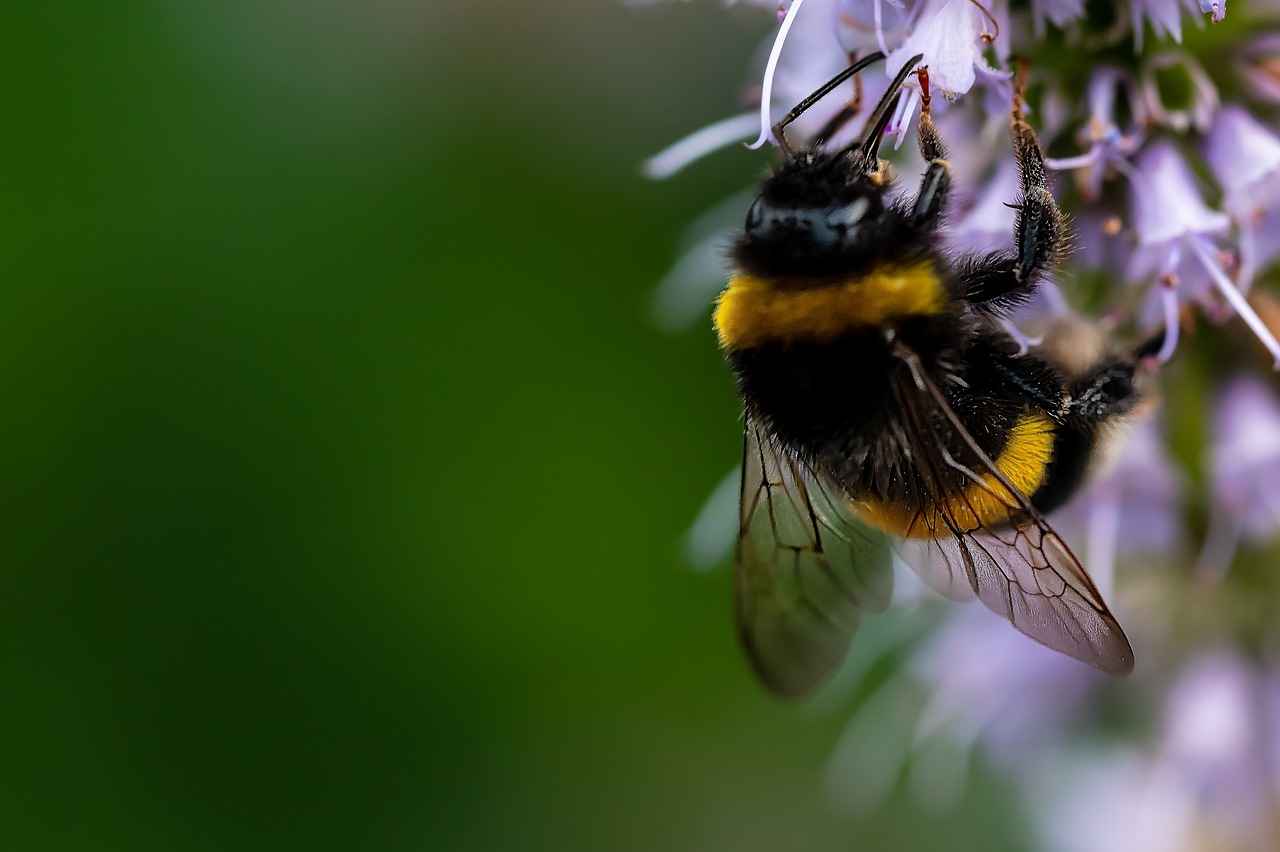
Preventing Future Bee Stings
Ensuring your dog’s safety during outdoor activities is vital, and taking preventive measures can significantly reduce the risk of bee stings. By being proactive, you can protect your furry friend from the discomfort and potential dangers associated with these stings.
- Training Your Dog to Avoid Bees: Teaching your dog to recognize and avoid areas where bees are prevalent is crucial. Use positive reinforcement techniques to reward your dog for staying away from buzzing insects. This training can be particularly effective during walks or playtime in the park.
- Creating a Safe Outdoor Environment: Modify your yard to discourage bee activity. Landscaping choices matter; consider planting bee-repellent flowers and shrubs. Additionally, keeping your lawn mowed and free of debris can help minimize bee habitats.
- Timing Your Outdoor Activities: Bees are most active during warm, sunny days. Plan your outdoor excursions for early mornings or late afternoons when bee activity tends to be lower. This simple adjustment can significantly reduce the chances of encounters.
- Using Bee Deterrents: Natural repellents, such as citronella or peppermint oil, can be effective in keeping bees at bay. Applying these around your outdoor spaces can create an unwelcoming environment for bees while being safe for your dog.
- Monitoring Your Dog: Always keep a close eye on your dog during outdoor play. If you notice them showing interest in buzzing insects, gently redirect their attention to toys or activities that keep them engaged and away from potential stings.
By implementing these strategies, you can create a safer outdoor experience for your dog, minimizing the risk of bee stings and ensuring their well-being during your adventures together.
Training Your Dog to Avoid Bees
When it comes to keeping your dog safe during outdoor activities, training plays a vital role. One of the most effective ways to protect your furry friend from bee stings is to teach them to avoid areas where bees are likely to swarm. This proactive approach not only reduces the chances of painful stings but also promotes a safer and more enjoyable environment for your pet.
Understanding the Risks
Bees are attracted to flowering plants, sweet scents, and certain outdoor areas, especially during warm months. By understanding these risks, you can help your dog learn to navigate their surroundings more safely. Training your dog to recognize and avoid these areas can significantly decrease the likelihood of encounters with bees.
Effective Training Techniques
- Desensitization: Gradually expose your dog to areas with bees while maintaining a safe distance. Reward them for staying calm and avoiding the area.
- Positive Reinforcement: Use treats and praise to encourage your dog to steer clear of places where bees are present. This method helps them associate avoidance with positive outcomes.
- Command Training: Teach your dog commands such as “leave it” or “come” to redirect them away from potential danger when they encounter bees.
Creating a Safe Environment
In addition to training, it’s essential to create a safe outdoor environment. Consider landscaping your yard by minimizing flowering plants and avoiding areas where bees are known to nest. Keeping your dog on a leash during walks can also help you guide them away from bee-prone areas.
Conclusion: A Safer Outdoor Experience
By implementing effective training techniques and creating a safe outdoor environment, you can significantly reduce the chances of your dog encountering bees. This proactive approach not only protects your pet from painful stings but also enhances their overall outdoor experience, allowing them to enjoy nature without fear.
Creating a Safe Outdoor Environment
When it comes to ensuring your dog’s safety while enjoying the outdoors, landscaping your yard plays a crucial role. By thoughtfully designing your outdoor space, you can significantly reduce the presence of bees and other potential hazards. Here are some effective strategies to create a safer environment for your furry friend.
- Avoid Flowering Plants: While flowers can enhance the beauty of your garden, they often attract bees. Opt for non-flowering plants and shrubs that provide shade and shelter without enticing pollinators.
- Choose Bee-Repellent Plants: Certain plants, such as lavender and marigolds, can deter bees. Incorporating these into your landscape can help keep your yard bee-free.
- Regular Yard Maintenance: Keeping your yard tidy by regularly mowing the lawn and trimming overgrown bushes can help minimize bee habitats. Bees are less likely to thrive in well-maintained areas.
- Install Fencing: A physical barrier can help keep your dog safe from areas where bees are more likely to be present. Consider using fences or barriers around flower beds or garden areas.
- Creating Designated Play Areas: Set up specific areas in your yard for your dog to play, ideally away from flowering plants. This can help limit their exposure to bees and other stinging insects.
By implementing these landscaping strategies, you can create a safe outdoor environment that minimizes the risk of bee stings for your dog. Not only does this enhance their safety, but it also allows them to enjoy their time outside without unnecessary stress.

Conclusion: Ensuring Your Dog’s Comfort
When it comes to keeping your furry friend safe during their outdoor adventures, understanding how to treat bee stings is crucial. By taking the right steps, you can significantly reduce your dog’s discomfort and ensure a swift recovery. Bee stings can be both painful and alarming for your pet, but with a little knowledge and preparation, you can handle these situations effectively.
Firstly, it’s important to recognize the signs of a bee sting. Look for symptoms such as swelling, redness, and limping. These indicators can help you determine if your dog has been stung. Additionally, behavioral changes like whining or excessive licking can signal that your dog is in pain and needs your attention.
In the event of a sting, immediate first aid is essential. Start by carefully removing the stinger using a credit card technique, which helps to avoid squeezing the venom sac. After that, clean the affected area with mild soap and water to minimize the risk of infection. To alleviate pain and swelling, consider applying a cold compress wrapped in a cloth, or using natural remedies like aloe vera or honey for their soothing properties.
Prevention is key in avoiding future bee stings. Training your dog to steer clear of areas with high bee activity can be beneficial. Additionally, landscaping your yard to minimize flowering plants can help create a safer outdoor environment.
By understanding how to treat bee stings and implementing preventive measures, you can ensure that your dog remains comfortable and safe while enjoying the great outdoors. Always remember that if your dog exhibits severe symptoms, such as difficulty breathing or extreme swelling, seeking veterinary assistance is paramount.
Frequently Asked Questions
- What should I do if my dog gets stung by a bee?
If your dog gets stung, first check for the stinger and remove it carefully using a credit card technique. Then, clean the area with mild soap and water to prevent infection.
- How can I tell if my dog is having an allergic reaction to a bee sting?
Watch for severe symptoms like difficulty breathing, excessive swelling, or extreme distress. If you notice any of these signs, seek veterinary help immediately!
- Are there home remedies for soothing a bee sting on my dog?
Yes! Applying a cold compress can help reduce swelling and numb the pain. Natural remedies like honey or aloe vera can also provide soothing effects.
- How can I prevent my dog from getting stung in the future?
Training your dog to avoid areas where bees are common can help. Additionally, consider landscaping your yard to minimize flowering plants that attract bees.
- When should I take my dog to the vet after a bee sting?
If your dog shows signs of severe swelling, difficulty breathing, or persistent pain, it’s crucial to seek veterinary assistance right away.


